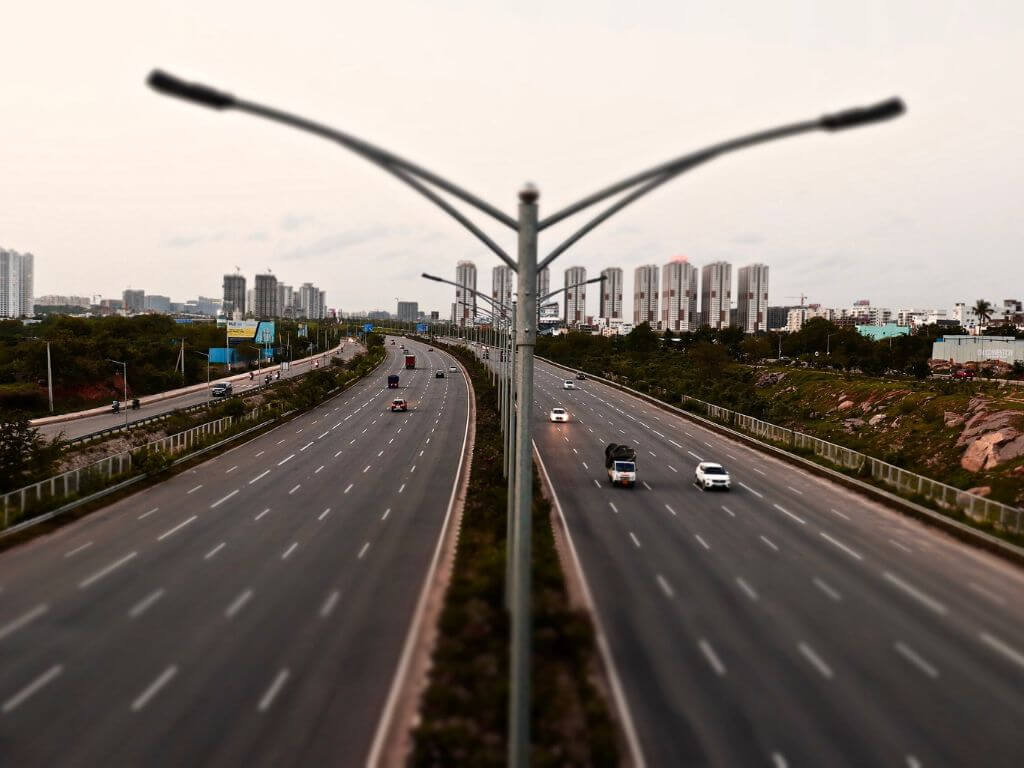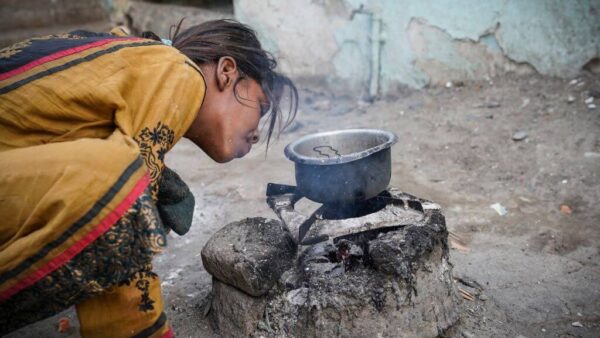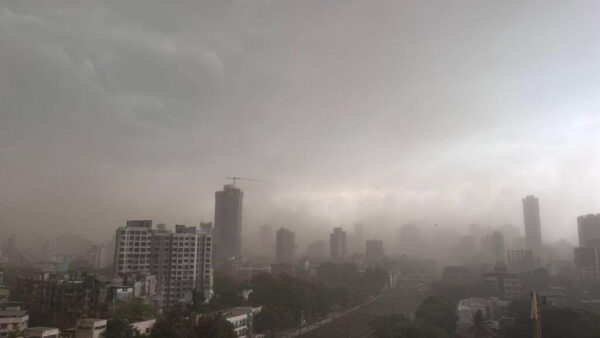‘Everything must change so that everything can remain the same’ – The Leopard
Climate change adaptation has failed. Carried out through “altering infrastructure, institutions and ecosystems that involves profit making, exclusion, or favouring interests is neither appropriate nor effective measures to the impact of climate change.”[1] Many adaptation projects do not help the vulnerable but strengthen established sectors. Climate mitigation has been near-impossible as it involves the reorganisation of the neoliberal economy based on fossil fuels and profits of corporations. It has, in fact, placed an unequal responsibility on countries of the Global South to manage climate impacts which have been worsened because of the existing structural inequalities.
According to The Climate Dictionary[2], adaptation refers to actions that help reduce vulnerability to the current or expected impact of climate change. Measures such as regenerative agriculture, improving water storage and use, managing land, and building stronger defences against extreme weather must happen at the local level. When such actions and decision-making hinge on equity and human rights, it becomes climate justice.
The UNFCCC[3] deployed market-based methods to boost climate adaptation demand in the Global South. This involved integrating climate risks into the development agenda, and adaptation measures into development plans, policies, programmes, and projects at national, state and local levels. Development is defined[4] as a deliberate acceleration of modernisation, interpreted as the synchronised four-fold transition of economy, government, political system, and society.
Since climate change is seen as undermining and hindering unlimited growth, it implies that climate adaptation to improve resilience capacity would fulfil the objectives of economic development and drive investments by encouraging urbanisation, building infrastructure, and increasing energy production and consumption. This calls for natural resource management, strengthening food security, expanding social and human capital, and consolidation of institutions.
Such a development agenda in India has taken the form of neoliberalism, defined as ‘a politically guided intensification of market rule and commodification’. This is enforced through urbanisation by decreasing capacity of the municipality, privatisation of basic services, and withdrawal of the state from urban development. The welfare state becomes an entrepreneurial state by adopting public-private partnerships especially in infrastructure projects, increasing gentrification to expand space for elitist consumption, and a growing exposure to global competition through financial and investment systems.
The neoliberal utopia of a free market is thus presented as a primary solution to curb the assault of climate change with narrow technological innovation-based remedies, and ‘green’ business solutions and services to reduce the effects of climate change, thus strengthening the grip of the market.
Investment ‘climate’
Telangana’s Municipal Administration and Urban Development (MA&UD) department recently published a report ‘Driving Growth through Urbanisation’[5], highlighting the state’s achievement of the highest per capita income in India, reaching Rs 3.17 lakh. This does not acknowledge the widespread inequality and poverty, unemployment, and other aspects measured in the multidimensional poverty index. Over the past decade since the state’s formation, a total capital investment of Rs 1.34 lakh crore has been dedicated to urban infrastructure development, approximately 85 to 90 percent of this is in Hyderabad with a ‘vision’ to make it to the list of top 25 global cities.
The core strategy, as proposed, is to drive growth through infrastructure development, market-oriented policies, self-regulation, and emphasising technology as key steps. The plan highlights the government’s commitment to supporting Sustainable Development Goals (SDGs)[6], and aligning them post facto with existing programmes.

Photo: Creative Commons
Sustainability in the built environment is also sought through the Energy Conservation Building Code[7] (ECBC) adopted in 2014, making it mandatory for commercial and public buildings (>1000 square metres plot area or 2,000 square metres built-up area) to have minimum requirements for energy efficiency while construction. A one-time six-star rating system is prescribed – one star at 5 percent to six stars at 30 percent of energy usage reduction.
Practices like water conservation, waste management, and tree plantations are encouraged. Energy-saving efficiency standards, based on calculations for various climatic conditions, are rarely developed domestically. The technology transferred is used by a third-party assessor empanelled by the state which necessitated a new academic industry offering postgraduate programmes in environmental design, specialised software training certifications, courses to implement these codes in building practices, and capacity-building initiatives for government officials across departments.
The ECBC applies to building envelopes,[8] particularly exposed walls and roofs, aiming to reduce energy consumption, achieved by optimising lighting, heating, ventilation, and air-conditioning systems. There are rating systems for every conceivable building material, machine, and product, with minute variances for density and reflectance, conductance and luminance to reduce solar and light gain, and air leakages. This leads to narrow innovations for eco-efficiency in construction material industry, machine industry, elevators, chillers, pumping and lighting systems, product industry like fans, refrigerators, microwaves while disregarding their extractive nature.
Following the Energy Conservation (Amendment Bill, 2022) the municipality is planning to extend[9] the ECBC compliance for residential buildings requiring energy consumption of >100 KW of power. However, the ECBC falls short in addressing the need for substantial infrastructure, material, and digital systems needed to implement, monitor and maintain them.
None of the ratings are permanent. The cycle continues with launches of materials, machines and products seasonally in architecture, engineering, and construction – ultimately ending up in landfills. The promotion of innovation and flexibility establishes a new market reality to build the capacities for adaptation, shifting the focus from meaningful reductions to managing them in order to safeguard economic accumulation.

Photo credit: ASCI, Hyderabad
Climate and the vulnerable
Market-led growth is both a drain on natural resources and a factor in increased pollution, which artificially creates vulnerabilities and inequities, worsening exposure to climate change. To address this, there is a soft adaptation[10] approach which ‘empowers the local community’, requires ‘low-impact technology’, and is ‘easy to understand’. An example is the Cool Roof Policy specifically aimed at vulnerable communities, which started as a pilot programme covering tin roofs with white paint donated by a paint manufacturer after the 2015 heatwave in India caused 2,500 deaths.[11]
The Heat Action Plan proposes to implement the Cool Roof Policy[12] over 10 years with a target of covering 300.3 square kilometres of roofs across Telangana slums, using CSR and government funds. To create a market for this, a whole paraphernalia of institutions and agencies is set up including testing facilities, monitor centres, specimen studies with reflectance and emittance of materials. This non-intervention limited approach shifts the focus from meaningful attempts to reduce greenhouse gases to energy consumption practices of those benefiting from the climate industry.
Other development strategies in the MA&UD report include the continuance of market-led real estate growth with transit-oriented development. This prioritises investment in transport infrastructure that largely favours private vehicle use and supports the automotive industry. For instance, the Strategic Road Development Plan of Rs 6,764 crore created 48 projects including flyovers, road over-bridges, vehicle underpasses, road under-bridges, cable bridge, and the construction of 191 kilometres of new roads between disconnected ex-urban development and dispersed greenfield projects.
The subsequent strategic step is ‘unlocking government land value’ by leveraging private investments, incentivising real-estate business supported through international financial consultations, and offering development rights to build commercial hubs along transport corridors. Although the plan mentions that 75 percent of the trips are projected to use public transport, it does not provide for such an alignment or has any policies to reduce dependence on the use of private vehicles or fossil fuels.
Technological ecosystem
The role of neoliberal policies can also be seen in the dependence on technology for urban development, mainly technologies of surveillance and control. Urban governance is sought to be made convenient, accurate and timely with vastly increased information through comprehensive data collection from every department to enable decision making, even as it makes governance increasingly opaque for the citizen. The digital approach converts every living and non-living entity into a dynamic data point. To create ‘an efficient, sustainable, and citizen centric urban ecosystem’ that will help ‘to maintain law and order, prevent crime and offer security,’ is essential to attract investment as investors want stable locations with a good political ‘climate’.
Seven lakh cameras[13] are now installed across the city; the ‘Command and Control Centre’ 20-storey police surveillance of the city 24×7 has created the largest database of facial recognition in the country. Its impact is acutely felt by Muslims and Dalits where ‘cordon and search’[14] have become a de facto way to subject neighbourhoods to fear and terror; a GIS map to identify crime hotspots focuses solely on the southern part of the city which begs the question on the role of surveillance technologies and vulnerabilities. The undemocratic nature of these searches and the dehumanisation of communities, ironically, hail technologies as saviour of mankind.
The Environmental Protection and Research Institute.[15] responsible for making the State Action Plan for Climate Change, was set up in 1992 as an independent society. It received technical assistance from Swedish International Development Cooperation Agency, and boasts of state-of-the-art facilities and wide-ranging objectives on sustainable environment management. In 2016, it was made a nodal agency for Clean Development Mechanism (CDM) and Centre for Climate Change (CCC) with advanced technological research capacities, preparing sector specific strategies against disaster risk and vulnerabilities. This represents the shift of the institution that plays a critical role in environment protection in the state.
The framework for climate action is provided by the central government following the guidelines established by the UNFCCC. India’s national action plan comprises both mitigation and adaptation measures but as a developing nation categorised under the non-Annex I[16] classification of the UNFCCC, without an emphasis on mitigation efforts. States are primarily tasked with enhancing capabilities for adaptation, but these localised plans are not directly linked to international climate negotiations.

Source: SAPCC 2015, EPTRI
The SAPCC[17] objective for Telangana is a facsimile of a national plan aimed at “inclusive and sustainable development of state, protecting the vulnerable section of society from climate change” and creating “ecological sustainability.” But it does not clearly state how climate change affects development or how people will be affected. It is a development framework, identifying sectors and key interventions for environmental sustainability, without a comprehensive approach. Its ten-year budget is Rs 6.4 lakh crore.
The critical issues for urban development to adapt to climate change — such as water scarcity, sewage and drainage systems, and solid waste management — are outlined, with strategies for safe water supply, 100 percent sanitation coverage, and implementing spatial planning to reduce vehicular use. However, the plan lacks specifics on how these systems will be adapted to address climate variability or how individuals and communities will be impacted by these changes.[18]
Other projects include the Smart Cities Mission. While the ‘smart solutions’ aim to resolve various transport-related challenges, they appear to neglect the protection of the ‘vulnerable sections of the community’ from the adverse impacts of climate change. Directly addressing climate change are two projects — Mission Kakatiya for the agriculture sector to improve minor irrigation systems by restoring lakes and tanks; and Haritha Haram, a state-wide aggressive plantation policy to reduce CO2 emissions by 10 million tonnes and increase tree cover from 24 percent to 33 percent in ten years.
The SAPCC operates as a developmental framework that incorporates climate change within the existing narrative to attract funds and investments from various national and state resources. However, the inflexible framework and the central imposition of a defined timeline transform this potentially impactful catalyst into a redundant document. This limits its ability in a climate crisis.[19]

Photo: Creative Commons
Conclusion
The responses to climate change adaptation are shaped by a neoliberal framework, thereby reproducing the same structural disparities and inequalities which shaped the climate crisis. Examples include the continuation of market-led development practices, infrastructural investments aligned with SDGs, co-opting environmental challenges into development agenda, adopting digital technologies for governance and control, promotion of ceaseless innovation driving over production and consumption.
Romain Felli in his book The Great Adaptation: Climate, Capitalism and Catastrophe writes: “Adaptation is shifting the focus from practices that lead to climate change, towards managing and minimising their consequences. Climate adaptation fits in the neoliberal movement of organising nature and establishing markets as the adaptive response to the climate crisis by integrating populations, ecosystems and institutions into capital accumulation. The programmes with technology transfer, capacity building, and knowledge sharing to reduce the vulnerability of the affected population are basically to increase their adaptation to global capitalism.”
The State Action Plan for Climate Change drafted in 2015 is a document framed to encourage and sustain development. The recent ‘Economic Development Plan for Hyderabad Metropolitan Area 2050’ and ‘Comprehensive Mobility Plan’ do not have any reference to climate change. The concept of ‘sustainability’ is used to stimulate the emerging adaptation market. This approach leads to the creation of new inequalities and vulnerabilities which makes existing or future efforts at climate change adaptation a predetermined failure.
Arshiya Syed is the founder of an architecture and urban design firm Studio Maqam in Hyderabad, Deccan. She is a graduate from the School of Planning and Architecture, New Delhi, and an Urban Fellow from the Indian Institute of Human Settlements in Bangalore. She is also a visiting faculty conducting urban design and housing studio in architecture schools.
This is Arshiya’s second essay supported by the QoC-CANSA Fellowship to report on Climate Change and cities in four nations of South Asia. The first part can be read here.
Cover photo: The Outer Ring Road in Hyderabad; Credit: Wikimedia Commons




